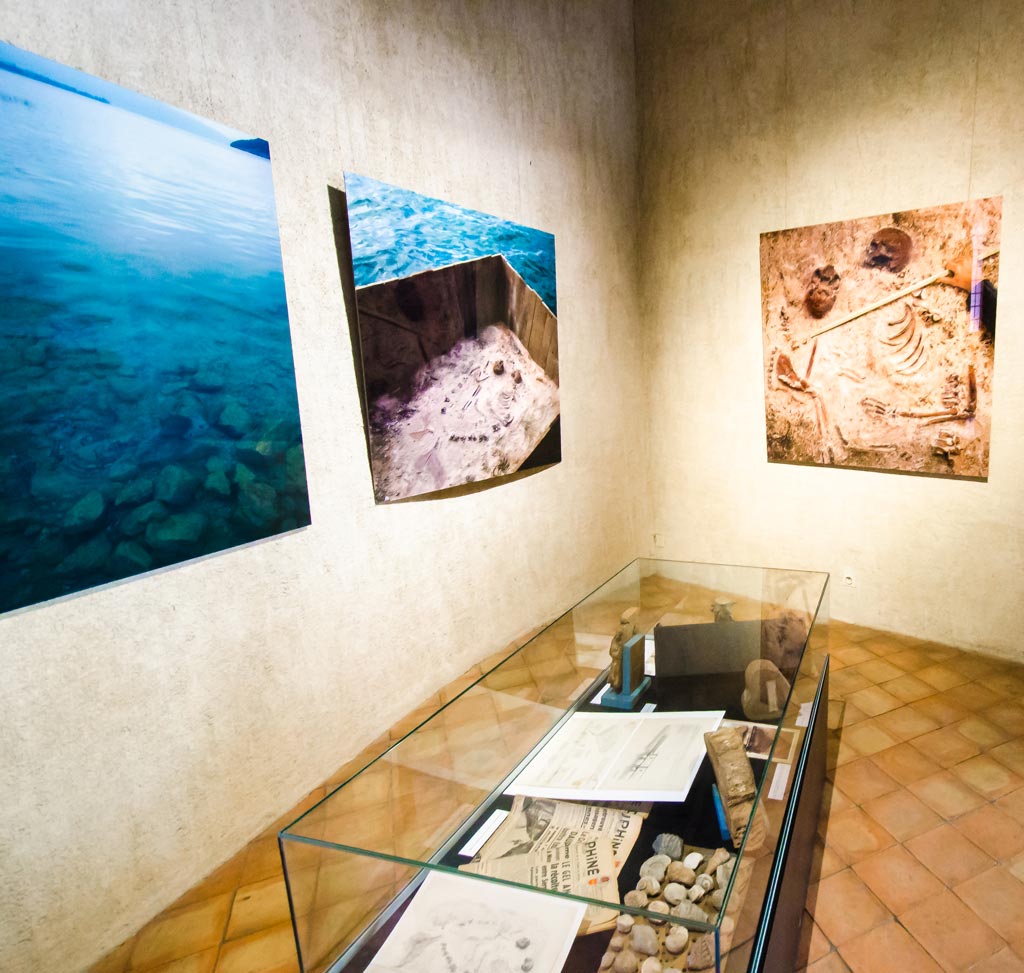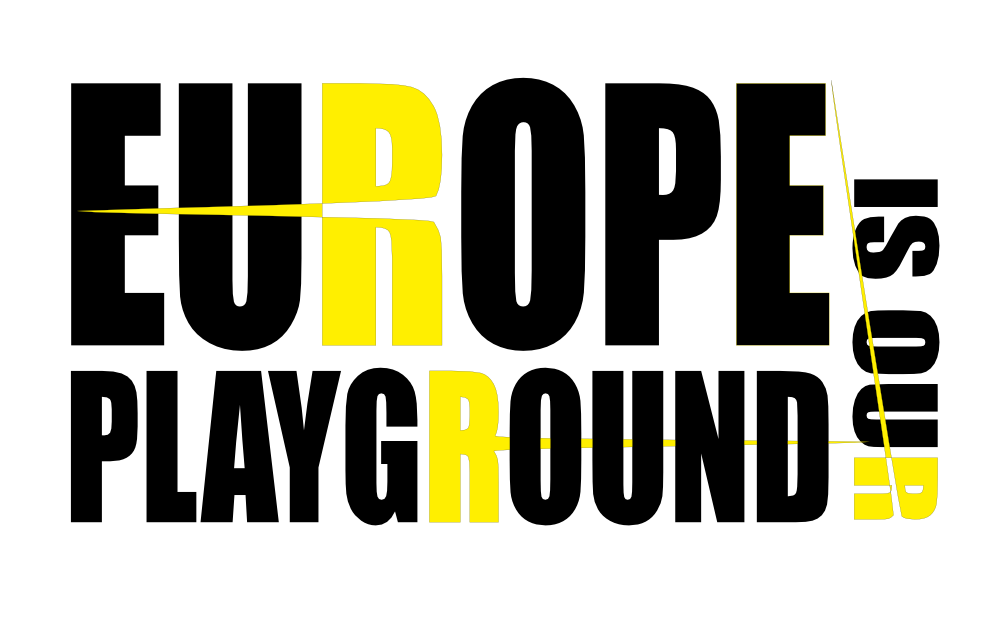The Legend Of The Lady Of Angon & The Sirens Of Lake Annecy
Whilst exploring the Château d’Annecy (the Annecy Castle) I came across an unusual little display on the Sirens of Lake Annecy. The display consists of a series of excavation photographs and the remains of the excavation themselves. Which are, dare I say, the mermaid-like remains of Annecy’s very own sirens.
The bones are not a hoax, but nor are they real. They form a part of an elaborate art installation by the conceptual artist Joan Fontcubert, and Annecy’s sirens were just a small selection of a variety of others that were found in southern France. The bones were to look as mermaid fossils (or hydropithèques or sirens), while taking advantage of certain Savoy legends. An entire backstory was created which I’ve included here:
“In 1947 Father Jean Fontana, a priest and teacher at the Petit Séminaire in the foothills of the French Alps, discovered the fossilised remains of a previously unknown species. He named it Hydropithecus alpinus. The fossils bear an uncanny resemblance to the dugong and the now-extinct Steller’s sea cow, yet have curiously human features. They have now been authenticated by anthropo-palaeontologists and are thought to be early mer-people, forming a tangible link in the development of the human species between the sea and the land. The site of the discoveries has been designated a UNESCO World Heritage Site and the fossils are the subject of a major National Geologic magazine story and film, for which professional wildlife photographer Fontcuberta was assigned to photograph. Digne-les-Bains in the southeast of France is located in the largest geological reserve in Europe and Fontcuberta collaborated with the local Musée Gassendi to create the Sirens work. The story about the discovery of the mermaid fossil is asserted through Fontcuberta’s placing of the fossil evidence in the Provence landscape, where it can still be seen. Sirens is entirely fictional, however, including National Geologic magazine, which has never existed.”
– Hydropithecus of Cerro de San Vicente, 2006 from the Sirens series by Joan Fontcuberta.

The point? Like much of the artist’s work it is to investigate the truth and reliability of photography. Using visual languages, he fabricates documentary style narratives that combine reality and fiction. His works are quite simply an investigation into photography’s authority and our inclination to believe what we see.
That’s all very interesting and I would have loved to have seen the exhibition last year in the Science Museum in London, however, whilst researching the legend of the sirens of Lake Annecy, I came across one of the Savoy legends that I mentioned earlier.
I’m sharing it here with as good a translation that I can fathom.
The legend Of The Lady Of Angon or La légende de la Dame du Lac
This particular legend has its roots in Annecy’s local folklore and it’s said to explain why the bodies of the drowning victims at the foot of the Roc de Chere in Annecy are rarely found.
The story begins with a young orphan girl of great beauty named Bernoline in the small village of Angon on Lake Annecy. She spends days and days bored in her home in the Castle Angon until one day, whilst walking, she crosses paths with a knight who was said to be returning from the crusades. The knight asked Bernoline for asylum for but a few days…. a few days that turned into years as the pair fell in love.
After a short while they married, and lived happily for two years until Bernoline saw in the sky a sublime star. Of course being enamoured of the star she requested that her knight bring it to her and who was he to refuse the beautiful Bernoline? And so it was that the knight set off on his journey, crossing seas and roaming forests for one hundred days until, on the edge of a sea, he meets a mermaid who agrees to give him the much coveted star… with just once catch. That he returns that very night to his love in Angon or else Bernoline will pay for the star with her life. Not deterred the knight galloped off and managed, amazingly, to arrive at the very end of the lake by dusk.
His luck however, was running thin, as suddenly the sky darkened and upon him rose clasps of deafening thunder and a thick smog that made it almost impossible to navigate around the dark lake. The knight realised after quite some time that he had taken a wrong turn and was now on the wrong side of the lake in Duingt, but all was not lost as he saw the shadow of a fisherman and his boat on the lake and he called to him until the fisherman finally acknowledged. However, all was not how it seemed. He barters with the fisherman to take him across the lake back to his love and it’s then that the man requested a rather unexpected price. He will take him through the last leg of his journey in return for his soul in 10 years time – for the fisherman is in fact the Devil. An ultimatum dawns on the knight’s mind as he realises that his beloved wife will die tonight if he doesn’t accept the offer. Of course, in the name of love and honour the knight accepts…. and he is soon again basking in the beauty of his wife Bernoline.
The pair lived happily after… for ten short years until the knight left his home, his servant passing on the grave news and the details of this diabolical agreement to Bernoline, who swears to rescue her husband from the clutches of the devil…and sure enough Satan appears before her. He promises to reunite her with her knight on condition that she recognise him amongst a crowd of bystanders….in the guise of another. She agrees knowing in her soul that she would recognise him in any skin and so she scrutinises the details of everyone that she meets with a magnifying glass, without ever recognising her love until one day the devil once again appears before her and says that her husband has appeared before her no less than ten times in different appearances.
Bernoline, desperate from despair then ran out into the night and threw herself into the lake from the top of the Roc de Chere, and since then, she has continued to grab at the feet of those who swim close to the Roc de Chere believing each time to have recognised her husband, and thus forming what is a macabre and rather sinister collection of corpses below the calm and beautiful waters of Lac d’Annecy.
Visit the Sirens exhibition at Le musée-château d’Annecy, 1 Place du Château, 74000 Annecy, France
If you found this review helpful, please consider booking your hotels with this link, from which we may earn a small commission.
Annecy hotel tip: Stay on a quiet bank of the lakeside in the stunning L’imperial Palace Hotel.
